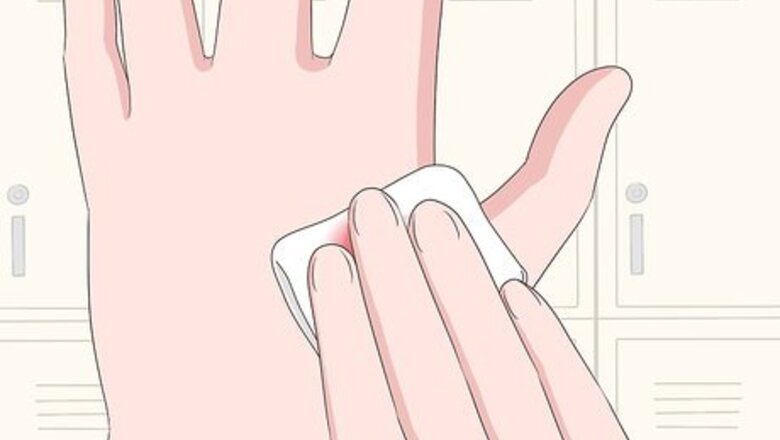
views
Treating a Bleeding Wart

Apply pressure to the bleeding wart. To stop a wart from bleeding, treat it as you would any other cut or graze. When applying pressure to the wound, use a clean, dry, and absorbent material, like a towel or handkerchief. Keep pressure on the wound for several minutes, or until the bleeding stops. When applying pressure, resist the urge to check on the wound. Easing pressure even for a moment may prolong the bleeding.

Elevate the bleeding wart above your heart to reduce the flow of blood. If your wart is on your hand, simply raise your hand above your head. If your wart is on your foot, lie down and raise your leg as high as you can. And, if the wart is on your face, stay in a sitting or standing position. If the bleeding wart is on another part of your body, do your best to put yourself in a position that will keep the wart above your heart.

Clean the wound with water and dry it with a clean towel. Begin cleaning your wound after the bleeding stops. Make sure the tap water you use is drinking-quality. After thoroughly cleaning your wound, use a dry and clean towel to gently dab the area dry. Avoid using antiseptic to clean your wound because it may damage your skin. Take care not to reopen your wound when drying the area.
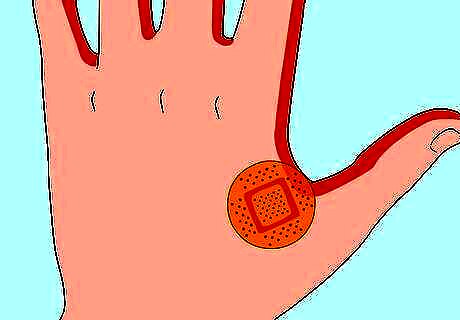
Apply a first-aid adhesive bandage to your wound once it is dry. Apply the bandage so that the pad is on the wound. Replace the bandage whenever blood soaks through it or it becomes dirty or wet. Keep applying bandages to the wound for a few days, or until the wound scabs over. To speed up healing, apply a thin layer of petroleum jelly to the skin around the wart. If there is any swelling, redness, or pain around the wound, of if you see any other signs that the wound has become infected, such as a body temperature of over 38 °C (100 °F), see a doctor.
Preventing Your Wart from Bleeding
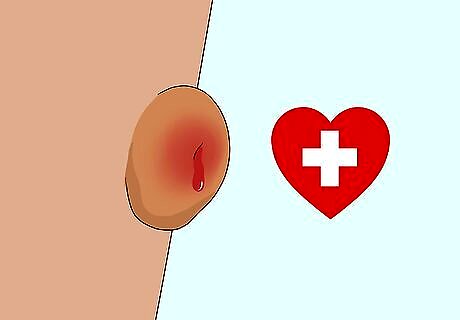
See a doctor if your wart bleeds easily. While most warts are no cause for concern, medical professionals recommend consulting your doctor if you have a wart that bleeds easily. Your doctor will be able to provide you with an accurate diagnosis and recommend the most appropriate course of treatment. You should also visit your doctor if your wart: starts bleeding often or bleeds repeatedly changes in color, size, or shape spreads to other parts to your body causes you any pain or discomfort (either physical or emotional)
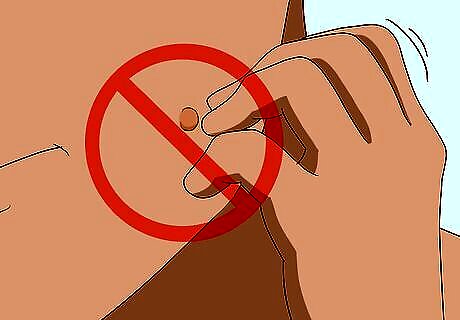
Avoid rubbing, picking, or scratching the wart. While it may be difficult not to rub, pick, or scratch your wart, doing so may cause it to start bleeding. It may also lead to the wart becoming infected. Rubbing, picking, or scratching the wart also increases the risk that the virus that caused the wart will spread to other parts of your body.
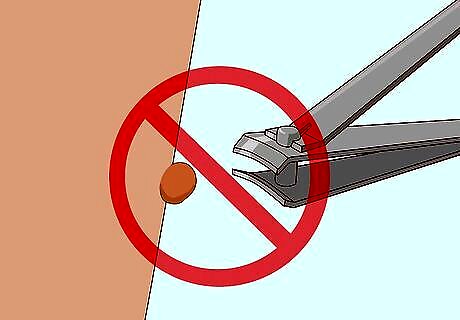
Refrain from trying to cut off the wart. Trying to cut off a wart will cause it to bleed a lot. It can also leave a scar. If the wart is causing you significant pain or embarrassment and/or you haven't had any luck with over-the-counter remedies, ask your doctor about possible treatments, such as cryotherapy, to remove the wart. Over-the-counter treatments for warts typically contain the active ingredient of salicylic acid, and come in the form of gels, creams, and medicated bandages. Cryotherapy involves the application of liquid nitrogen to your wart. The liquid nitrogen will freeze the wart, destroying the skin cells. This is a simple and quick procedure; a typical session will take only 5 – 15 minutes. It may be painful, however. Most warts will blister, scab over, and fall off 7 – 10 days after the cryotherapy session.

















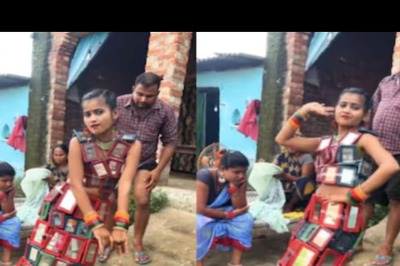
Comments
0 comment